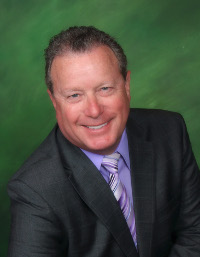
Gary Vaughn, CDT, CTO
A certain young boy sat down reluctantly to practice the music his teacher had given him before returning to his next piano lesson. He had been outdoors playing, which was his favorite pastime. Although he had a great aptitude and talent for playing the piano, it was obvious his mind was not truly focused on the 88 keys of this musical instrument. He had played these pieces before and was quite familiar with the notes, but the aggravation he felt for having to cease his outdoor activities to sit down and practice the piano were more than apparent as he proceeded to plunk out the notes of the sheet music perched before him. Yes, he played the correct notes written in the piece, but each were played with identical emphasis, in a monotone cadence, void of any nuances typically heard when the soft pedal and proper touch were applied to this precision instrument. The melody, which should have had a slightly more prominent sound, was lost in the harmony line of the music. Even to the trained listening ear, this spawned confusion, because the harmony was initially only intended to compliment the melody line. At length, he finished the piece, but the sound bore little resemblance to the flavor, color or desired effect the songwriter had carefully written into the piece when it was composed. Certainly, any student with similar experience on the piano, could have easily communicated the intended message of the composer, had closer attention been paid to the music as it was written.
In the dental profession, distractions surround us, each lobbying for our attention. There are times when these distractions can be a great source of aggravation, and actually keep us from doing our best work. As the composer of your own “music,” only you know when you have performed the piece the way it was intended. There are a plethora of “instruments of communication” at your disposal. In the hands of any capable practitioner, each of these instruments in concert, serve as a means of creating a beautiful outcome. Familiarity with materials, their proper use, as well as the indicated application, communicate an understanding of all the subtleties of a beautifully played piece. Without question, when attention is paid to the nuances, the work of a true artisan sets him or her apart from others who have chosen to just “play the notes” without regard to the use of the “soft pedal,” proper touch, or simply following the numerical value of each note in the score. This principle plays out, whether one is restoring a single tooth or treating a multiple unit aesthetic case. For example, when a hand piece is used to prepare a tooth receiving a restoration, it can serve as an instrument of communication by prepping the tooth to closely resemble a miniature version of the desired final restoration. With the hand piece skillfully used to reduce just the right amount of tooth structure, the doctor conveys to the laboratory the necessary information to complete a beautiful restoration. Needless to say, the task at hand is much easier if the tooth is ideally positioned in the arch form. If not, the burr must be employed by laying it on the tooth in the exact opposite angle that it presents itself in order to remove the errant inclination. If not, the restoration cannot be up righted, and may even worsen the already incorrect position. Additionally, if there is asymmetry in the gingivae, a diode laser can serve as yet another instrument of communication, provided there is no biological width violation. If these and other subtleties of dental preparation are not observed, whether by neglect or lack of knowledge, the result is usually mediocre at best. In the aesthetic world, indeed it would be considered a failure. When a Smile Design case is diagnosed and treatment is accepted, additional instruments of communication become even more essential. Stick bite, prep shades, bite registrations, facebow transfers, accompanied with good photography are each critical components in the artisan’s hands. In essence, each instrument in the armamentarium serves to communicate. When each are implemented correctly, it can be equivalent to a master pianist striking the keys with just the right emphasis, having followed all of the nuances the composer intended when the piece was created, culminating in a beautiful, melodious sound enjoyed by all those listening.
If you have questions about my article or if you would like to send a case, please contact Gary Vaughn, CDT, CTO (916) 786-6740, or via email gvaughn@thePAC.org.
